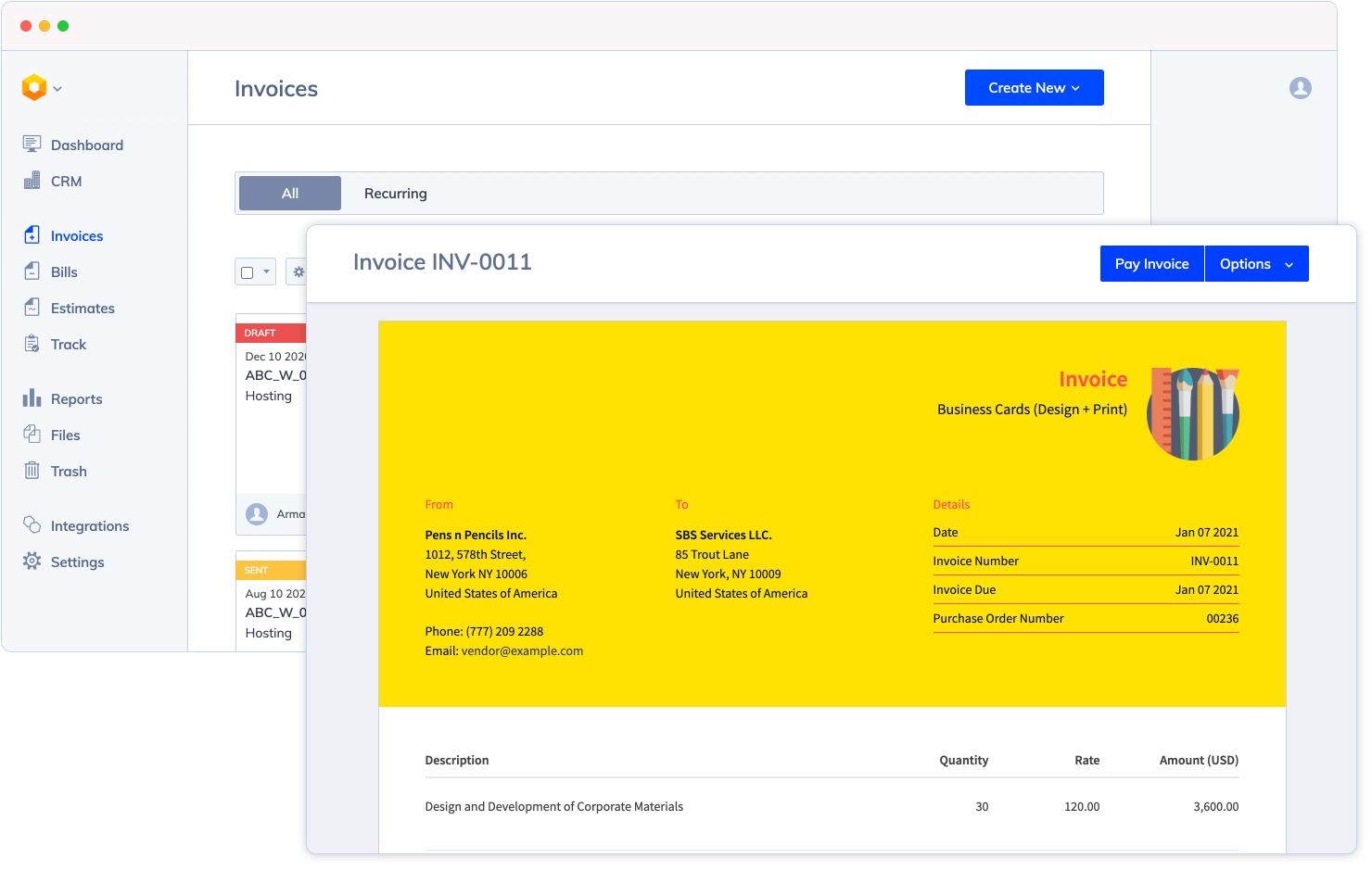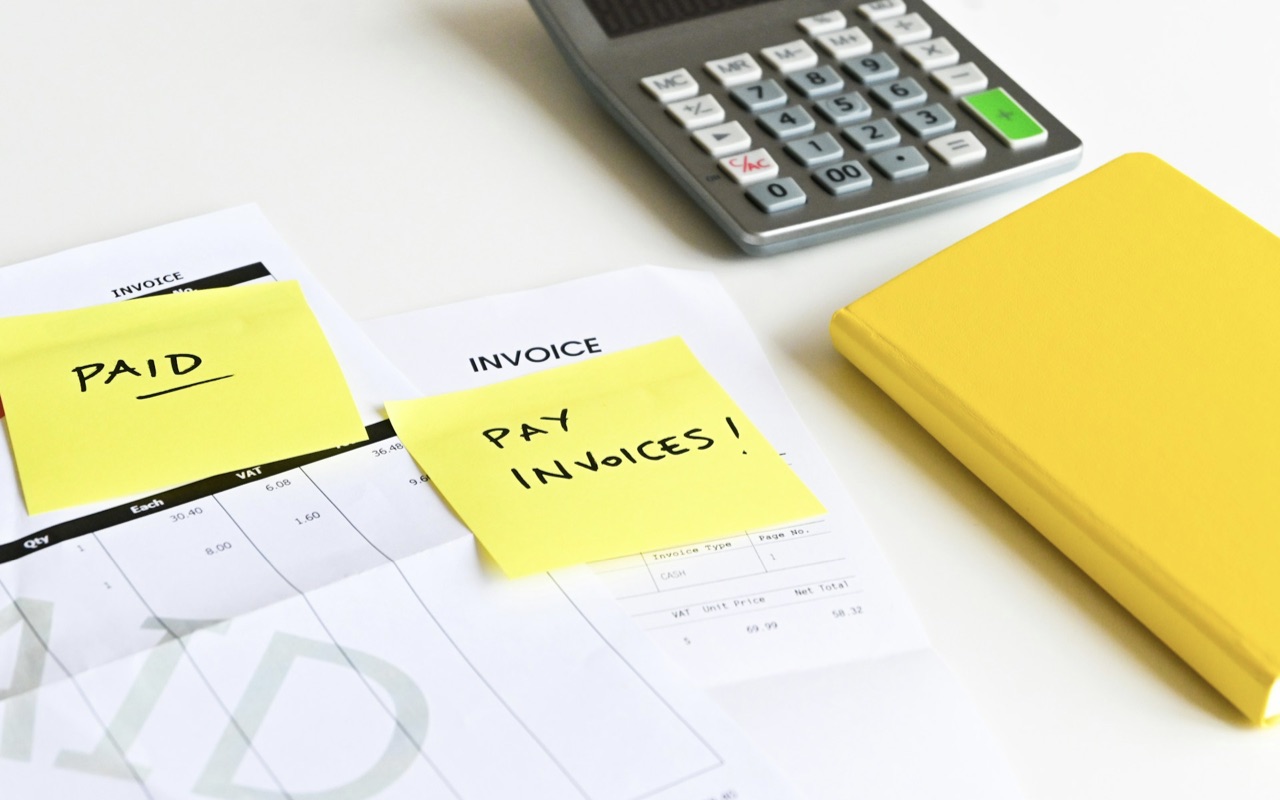Quote vs. Invoice: Understanding the Difference for SMEs
For small and medium-sized enterprises (SMEs), managing finances is never just about balancing the books; it also requires clear and effective communication with clients and suppliers. Central to this communication are two fundamental documents: quotes and invoices. While both play crucial roles in business dealings, they serve distinct purposes and are used at different stages of the sales process.

Understanding the difference between a quote and an invoice is essential for maintaining smooth operations in your small business and ensuring that financial transactions are handled professionally. Misunderstandings in their use can lead to delays in payment, confusion over terms, and even lost business opportunities. This article aims to offer clarifications on these two important documents, providing you with a clear understanding of when and how to use each one effectively. By mastering the appropriate use of quotes and invoices, businesses can enhance their professionalism, improve cash flow, and build stronger relationships with their clients and suppliers.
What is a Quote?
A quote, also known as a quotation (or sometimes an estimate), is a formal statement issued by a vendor to a prospective buyer that outlines the terms and conditions for a potential sale. It details the goods or services offered, the prices, and the terms under which the seller is willing to fulfill them. Essentially, a quote is a preliminary document that indicates what a seller proposes to provide and at what cost, before any agreement is finalized.
Definition and Purpose
A quote is often the first official document in the sales process. It serves as a tool for businesses to communicate their offerings in a structured and professional manner. The primary purpose of a price quote is to inform the customer about the costs associated with their request and to define the scope of work. This document is critical because it sets the stage for negotiations and serves as a reference point if a contract is pursued.
Components of a Quote
A comprehensive quote generally includes the following information:
- Business Information: This includes the name, contact details, and logo of the issuing company.
- Customer Information: The name and contact details of the customer receiving the quote.
- Date of Issue: The date when the quote is issued, which is important as it often has a validity period.
- Detailed Description of Goods or Services: A clear and thorough description of what is being offered. This section may include specifications such as quantities, sizes, materials, and any other pertinent details.
- Prices and Breakdown: Each component of the offer should have an associated cost listed. This can be detailed further with subtotals for various elements of the service or product.
- Total Cost: The total price inclusive of taxes, discounts, or any additional fees.
- Terms and Conditions: These might include payment terms, delivery details, warranty information, and the validity period of the quote itself, usually stipulating how long the prices and conditions are guaranteed.
Usage and Importance
Quotes are primarily used when the pricing of goods or services is not standard and varies depending on the customer’s specific needs or the complexity of the job. They are crucial for budgeting and planning from a customer's perspective because they provide an estimate of the cost before any commitments are made. For businesses, issuing a well-structured quote shows professionalism and can be a deciding factor in securing a contract.
In summary, a quote is not just a casual estimate but a critical business document that outlines potential financial transactions. It allows customers to compare offerings and make informed decisions, while giving businesses a chance to clearly present their value proposition.
What is an Invoice?
An invoice is a critical document used in business transactions that specifies the amount of money due for goods or services that have already been delivered or agreed upon. It is issued by a seller to a buyer after the delivery of goods or services, serving as a request for payment and a record of the sale.

Definition and Purpose
An invoice is more than just a bill; it serves several crucial functions in business operations. It formally requests payment from the buyer, delineates the details of the sale, helps manage accounts receivable, and is essential for bookkeeping and tax purposes. Invoices also serve as a legal document that can be used as evidence in disputes, ensuring that there is clear documentation of the terms of sale and the expectation of payment.
Components of an Invoice
A typical invoice includes several key elements that provide a clear breakdown of the transaction:
- Invoice Number: A unique identifier for each invoice which is crucial for tracking payments and managing records.
- Seller’s Contact Information: This includes the name, address, and contact details of the business issuing the invoice.
- Buyer’s Contact Information: The name and address of the customer or company being billed.
- Date of Issue and Payment Due Date: The date the invoice is issued and the date by which payment should be made.
- Description of Goods or Services: A detailed list of the items provided or tasks performed, including quantities, hours, rates, and any other pertinent details.
- Subtotals and Total Amount Due: Itemized charges for the individual components of the transaction, any applicable taxes, and the total amount due.
- Payment Terms: Conditions that specify the accepted payment methods, any late payment penalties, and other related information.
Role in the Payment Process and Financial Record-Keeping
Invoices are pivotal for the financial management of any business. They play a key role in the payment process by clearly indicating to clients what they owe, for what, and when it needs to be paid. This clarity helps to expedite the payment process and reduce discrepancies which might delay it.
From an accounting perspective, invoices are indispensable. They are used to record revenue and track the sale of goods and services. This tracking is vital for inventory management, financial forecasting, and preparing financial statements that reflect the company’s economic activities accurately.
Legal and Tax Implications
Invoices are legally binding documents that outline the obligation of a customer to pay the supplier. In many jurisdictions, invoices are a necessary part of tax filings, used to claim business income and to deduct tax liabilities. The meticulous detail and accuracy of invoicing, therefore, not only fulfill legal compliance but also safeguard businesses during tax assessments and audits.

Understanding the essential nature and function of an invoice allows businesses to effectively manage their cash flow and maintain accurate financial records. Invoices not only facilitate timely payments but also serve as a cornerstone of systematic financial management and compliance.
Key Differences Between a Quote and an Invoice
While quotes and invoices are integral to the operations of any business, particularly SMEs, they serve very different purposes and are used at distinct stages of the business transaction process. Understanding these differences is crucial to managing your business operations smoothly and ensuring proper financial and legal compliance. Here’s a closer look at the major differences between a quote and an invoice:
Purpose and Timing
- Quote: A quote is provided before any agreement is finalized or work begins. It serves as a proposal and gives potential buyers an estimate of the costs involved in a transaction. Quotes are often negotiable and can be adjusted based on customer feedback or changing circumstances before an agreement is reached.
- Invoice: In contrast, an invoice is issued after goods have been delivered or services have been rendered. It serves as a bill for the work completed and is a formal request for payment, reflecting agreed-upon prices and terms. Unlike quotes, invoices are not negotiable.
Information
- Quote: Quotes typically outline the scope of work, detail the costs for parts or services, and include terms and conditions that are subject to change until finalized. The prices and details in a quote are provisional and can be altered before the final agreement.
- Invoice: Invoices provide a detailed account of the goods or services delivered, including descriptions, quantities, per unit costs, and the total amount due. They also include specific payment terms, such as due dates and penalties for late payment, which are meant to enforce the payment agreement.
Functionality
- Quote: The primary function of a quote is to initiate sales negotiations. It helps customers compare offerings and make informed decisions about proceeding with a purchase. It is a tool for facilitating discussion and modification before any commitment is made by either party.
- Invoice: The function of an invoice is to facilitate payment and serve as a record of sale for accounting purposes. It confirms that a transaction has occurred and that payment is due, making it a critical document for financial tracking and legal purposes.
Legal Status
- Quote: A quote is generally not a legally binding document. It is an invitation to enter into negotiations and does not constitute a formal contract between parties.
- Invoice: An invoice, on the other hand, is a legally binding request for payment once issued. Failure to pay an invoice can result in legal penalties and can be enforced in a court of law if necessary. </li>
Impact on Cash Flow
- Quote: Quotes have no direct impact on cash flow since they do not involve immediate transactions. They are predictive and intended for planning purposes.
- Invoice: Invoices directly impact cash flow. They trigger the payment process and are used to manage income and expenditure effectively within a business.
By clearly distinguishing between quotes and invoices, businesses can better manage customer interactions, ensure accurate financial documentation, and maintain efficient operational workflows. Understanding and using these documents correctly not only enhances business professionalism but also supports sustainable financial management.
Transitioning from Quote to Invoice
For many SMEs, the process of transitioning from a quote to an invoice is a critical phase in the customer transaction lifecycle. This transition not only signifies the acceptance of a proposal but also sets the stage for the financial realization of a deal. Managing this transition effectively can lead to smoother operations and a better customer experience. Here’s how to handle this important shift seamlessly.

Step-by-Step Guide to Transitioning
- Finalizing the Quote: Ensure that the quote is fully agreed upon by all parties. This involves confirming that all services, products, and terms (including prices, delivery schedules, and any specific conditions) are clearly understood and accepted by the customer. Any negotiations or adjustments should be completed at this stage.
- Confirmation of Order: Once the quote is accepted, it's common practice to receive a formal order confirmation from the customer. This may be through a purchase order or a written confirmation. This document should reference the quote and confirm that the terms outlined are correct.
- Generating the Invoice: With the order confirmed, generate an invoice based on the agreed-upon quote. The invoice should match the final quote exactly in terms of services or products provided, pricing and final cost, and terms. It is crucial that there are no discrepancies between the quote and the invoice to avoid confusion or disputes.
- Invoice Details: Ensure the invoice includes all necessary details such as the invoice number (which should ideally follow a sequential system for easy tracking), the date, payment terms, and any other relevant information needed to process the payment.
- Sending the Invoice: Send the invoice promptly after the order confirmation or the delivery of the service/product. Timely invoicing reinforces professionalism and reduces the risk of delayed payments.
- Follow-Up: After sending the final invoice, it’s important to follow up to ensure it has been received and is being processed. Depending on the payment terms, follow-ups should continue until payment is received.
Tips for Effective Management
- Use Integrated Software Solutions: Using a platform like Hiveage that can integrate quoting and invoicing processes helps ensure that information flows seamlessly from one stage to the next, reducing the chance of errors and saving time.
- Maintain Clear Communication: Throughout the process, maintain open lines of communication with your customer. Clear communication can prevent misunderstandings and help resolve any issues quickly.
- Document Everything: Keep thorough records of all communications and documentations, including the original quote, any adjustments made, order confirmations, and correspondence. This will be invaluable in case of discrepancies or disputes.
- Automate Reminders: Utilize tools that can automatically send reminders to customers about upcoming and overdue payments, and can generate a receipt automatically. This can help maintain a healthy cash flow.
Impact on Customer Relationships
Managing the transition from quote to invoice smoothly can significantly enhance customer satisfaction. It shows that your business values professionalism and is committed to fulfilling its agreements. Moreover, a seamless process can encourage repeat business and referrals, which are valuable for any small business’s growth and sustainability.
By adhering to these guidelines, businesses can effectively manage the transition from quotes to invoices, ensuring that transactions are not only successful but also contribute to long-term business relationships and financial health.
Best Practices for Creating and Managing Quotes and Invoices
Creating and managing quotes and invoices efficiently is vital for maintaining good relationships with customers and ensuring healthy cash flow in any SME. It reflects a business’s professionalism and attention to detail, which are crucial for building trust and credibility. Here are some best practices for handling these important documents effectively.
Creating Effective Quotes and Invoices
- Clear and Detailed Information: Ensure that both quotes and invoices include clear, detailed descriptions of the products or services provided, along with any relevant details such as quantity, per unit cost, and total cost. Clarity prevents misunderstandings and disputes.
- Consistent Branding: Use consistent branding across all your business documents. Include your logo, brand colors, and professional layout in your quotes and invoices to reinforce your brand identity and professionalism.
- Prompt Issuance: Send quotes as soon as you understand the customer’s requirements, and issue invoices immediately after completing a service or delivering a product. Promptness ensures that your business appears efficient and can significantly speed up the payment process.
Managing Quotes and Invoices
- Use Automated Tools: Implement tools like Hiveage to automate the creation, sending, and tracking of quotes and invoices. Automation reduces the likelihood of human error, saves time, and keeps records organized.
- Regular Follow-Ups: Establish a routine for following up on sent quotes and outstanding invoices. Gentle reminders can encourage prompt responses and faster payments, maintaining a steady cash flow.
- Maintain Accurate Records: Keep accurate and up-to-date records of all quotes and invoices. This helps in tracking the progress of transactions and is essential for financial analysis and forecasting.
- Secure Storage: Ensure that all quotes and invoices are stored securely to protect sensitive customer information and comply with data protection regulations. Secure storage also prevents loss of data which could complicate financial tracking and audits.
Enhancing Customer Experience
- Flexible Payment Terms: Where possible, offer flexible payment terms to customers as part of the invoicing process. Tailoring terms to customer needs can improve relationships and increase customer loyalty.
- Easy Payment Options: Incorporate easy payment options within your invoices, such as links to online payment portals. The easier it is for customers to pay, the faster you are likely to receive payments.
- Transparent Communication: Always communicate clearly about any changes in pricing or terms before they are reflected in an invoice. Transparency in communications can prevent disputes and enhance customer satisfaction.
Legal Compliance
- Comply with Legal Standards: Ensure that your quotes and invoices comply with local and international trade laws, especially if you are dealing with customers from different countries. This includes understanding and implementing tax requirements and any other legal obligations.
- Review Regularly: Regularly review your invoicing and quoting processes and documents to ensure they are up to date with current laws and best practices. This is crucial for maintaining compliance and efficiency.
By following these best practices, SMEs can create a robust system for managing quotes and invoices that not only enhances operational efficiency but also builds trust with customers and secures the business’s financial health. Tools like Hiveage can play a critical role in streamlining this process, making it easier to manage and more effective.
Legal and Tax Implications of Quotes and Invoices
Understanding the legal and tax implications associated with quotes and invoices is essential for SMEs to ensure compliance and avoid potential legal issues. Proper management of these documents not only aids in smooth financial operations but also safeguards the business against audits and legal disputes. Here’s an overview of the key legal and tax considerations you should be aware of when dealing with quotes and invoices.

Legal Validity of Quotes and Invoices
- Quotes: Although quotes are not legally binding agreements, they can be construed as part of contractual negotiations if they are very specific and linked to particular terms and conditions. It’s crucial that quotes are clear and accurately represent what your business can deliver to avoid legal disputes about expected services or products.
- Invoices: Invoices, on the other hand, are legally binding once issued. They formalize the expectation for payment following the delivery of goods or services as per agreed terms. Failure to pay an invoice can result in legal action being taken by the issuer, hence why it’s vital for invoices to be accurate, clear, and reflective of previously agreed terms.
Tax Implications
- Sales Tax and VAT: Invoices are critical for the accurate calculation and reporting of sales taxes or VAT. Depending on your location and the nature of the goods or services provided, the invoice must detail any tax amounts applicable. This is essential not only for compliance with tax laws but also for allowing your clients to claim tax inputs, where applicable.
- Income Reporting: Invoices form a key part of your financial records and are essential for reporting income accurately on business tax returns. Proper management ensures that you are declaring the correct income amounts and paying any owed taxes, thus avoiding penalties for underreporting.
- Audit Trail: Both quotes and invoices should be retained as part of your business records. They provide an audit trail that can be invaluable during financial audits or tax inspections. These documents prove the terms and prices of transactions and can help resolve any discrepancies that arise with tax authorities or other third parties.
Best Practices for Compliance
- Regular Updates: Stay updated with any changes in tax legislation or business law that could affect your invoicing and quoting processes. Regular updates ensure that your practices remain compliant with current laws.
- Consistency: Apply consistent procedures when creating and issuing quotes and invoices. This not only minimizes errors but also ensures that all documents are compliant and uniform, which is beneficial during audits.
- Professional Advice: Consult with a legal or financial advisor to ensure that your quote and invoice practices meet all legal requirements. Professional advice can help you navigate complex tax laws and contractual obligations effectively.
- Use of Software Tools: Implementing a robust invoicing tool like Hiveage can help manage the complexities of tax calculations, document storage, and compliance with legal standards. Such tools often include features that update automatically to reflect current tax rates and legal requirements, thereby simplifying compliance.
By understanding and adhering to the legal and tax implications of quotes and invoices, SMEs can enhance their credibility and ensure smooth operational and financial processes. This foundational knowledge not only helps in managing day-to-day transactions but also prepares your business to handle growth and regulatory scrutiny effectively.
Conclusion and Next Steps
Understanding the distinct roles and legal implications of quotes and invoices is crucial for any SME aiming to maintain efficient, compliant, and professional business operations. Each document serves a specific purpose in the business transaction process: quotes set the stage for negotiations and agreements, while invoices request and justify payments due for goods and services rendered. Properly managing these documents not only streamlines your financial processes but also strengthens your relationships with clients by ensuring transparency and reliability.
Conclusion
- Quotes are preliminary, often negotiable, and serve as the basis for potential transactions. They detail proposed services and costs, setting expectations between buyers and sellers.
- Invoices are definitive requests for payment issued after services are rendered or goods are delivered, carrying legal weight to enforce financial obligations.
- Legal and Tax Implications: Both quotes and invoices have important legal and tax considerations that businesses must manage to avoid legal repercussions and maintain compliance.
By clearly understanding and differentiating between quotes and invoices, your business can avoid common pitfalls such as disputes over payment and services, delayed payments, and issues during tax audits.
Next Steps
Now that you understand the key differences between quotes and invoices and the importance of each in your business operations, it’s time to take action:
- Review Your Current Practices: Assess how your business currently handles quotes and invoices. Look for areas to improve accuracy, compliance, and efficiency.
- Implement Robust Tools: Consider adopting invoice software tools like Hiveage, which can help automate and manage the creation, sending, and tracking of both quotes and invoices. These tools ensure that your documents are not only professional but also compliant with legal and tax regulations.
- Educate Your Team: Ensure that all relevant team members are trained on the importance of these documents and how to handle them correctly. This includes understanding their legal implications and the role they play in your business’s financial health. </ul>
Take the steps today to refine how your SME handles quotes and invoices. By doing so, you'll enhance your operational efficiency, strengthen customer trust, and ensure compliance, paving the way for a more successful and organized business environment.
Join thousands of business-savvy entrepreneurs on our mailing list.
Curated emails that’ll help you manage your finances better.




